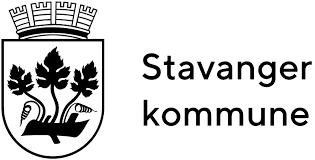Stavanger
Il quarto comune norvegese gestisce la raccolta dei rifiuti con contenitori sotterranei, sensori IoT, una flotta di camion snella e flussi di dati orchestrati dalla Boomi Enterprise Platform.
Obiettivi aziendali
Il comune di Stavanger raccoglie vetro, carta, rifiuti organici e residenziali dalle abitazioni e dai contenitori di stoccaggio dotati di sensori in otto comuni norvegesi. Ogni contenitore di stoccaggio è alimentato a energia solare e dotato di sensori che segnalano i livelli di carburante e di rifiuti agli autisti dei camion e al team di manutenzione.
Stavanger utilizza diversi sistemi informatici, che comunicano costantemente per garantire l'efficienza operativa. L'azienda aveva bisogno di un sistema flessibile per armonizzare i dati ricevuti dalla flotta e dai contenitori dei rifiuti, per migliorare il servizio e l'efficienza complessiva.
Sfide di integrazione
I dati raccolti da Stavanger dovevano essere gestiti manualmente. I dati erano archiviati sia localmente che nel cloud, spesso su sistemi diversi. Di conseguenza, potevano esistere più versioni contemporaneamente, rendendo difficile per il team di manutenzione trovare le informazioni più recenti e aggiornate.
Stavanger aveva bisogno di integrare i dati provenienti dai sensori, dal sistema di controllo degli accessi e dai sistemi di gestione del back-office. Per snellire questo processo, automatizzare il flusso di informazioni, aggiungere flessibilità e aumentare l'efficienza, il comune si è rivolto a Boomi.
Come Boomi ha aiutato
Con l'aiuto del partner Fieldata, Stavanger ha implementato la Boomi Enterprise Platform per semplificare la gestione delle API e consentire il flusso di informazioni.
Utilizzando Boomi Integration, gli ingegneri di Fieldata hanno collegato i nuovi sensori IoT nei contenitori interrati con un sistema che comunica con i tablet degli autisti della flotta. Un'altra integrazione collega un portale web che i residenti locali possono utilizzare per richiedere il ritiro di determinati tipi di rifiuti. La piattaforma low-code di Boomiha eliminato la necessità di competenze intensive nella programmazione dei dati, rendendo queste integrazioni facili e veloci.
Risultati
Con Boomi, Stavanger ha notato un cambiamento positivo per la sua attività e per il servizio che offre ai cittadini della sua regione, tra cui:
- Informazioni in tempo reale sulle operazioni attraverso un unico portale per l'amministrazione del sistema di sensori
- Creazione di un'infrastruttura IT completamente scalabile che consenta la crescita dell'azienda.
- Ordini di assistenza automatizzati in base a messaggi di stato/errore
- Riduzione delle emissioni di CO2 grazie alla maggiore efficienza operativa
- 24 giorni all'anno risparmiati grazie all'eliminazione dei processi manuali, che si aggiungono al tempo produttivo ad alto valore aggiunto


 English
English Deutsch
Deutsch Français
Français Italiano
Italiano 日本語
日本語